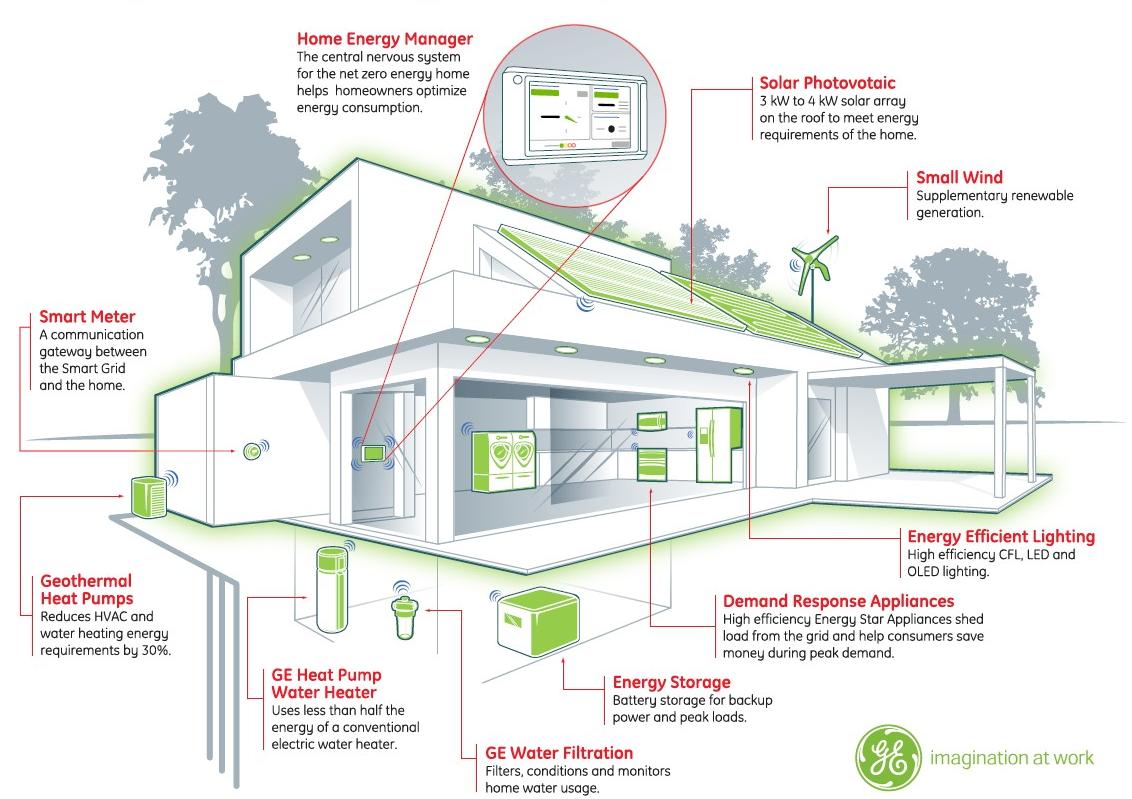Smart building systems are designed to regulate energy use and prevent energy waste. One crucial component of a smart buildings energy consumption system is the smart sensor. These sensors are installed in the smart grid to avoid unnecessary expenses in the long term.
Making sure that your ventilation systems and lighting are properly maintained will ensure that they’re always running at their most efficient.
For building occupants, this technology means comfort, with consistent, even heat from room to room.
Better control of smart buildings energy consumption also means that business owners and tenants can save money on their bills.
Table of Contents
How to Reduce Smart Buildings Energy Consumption
As the world progresses, more and more buildings are becoming “smart.” By definition, a smart building is “a structure that uses automated processes to control the internal environment and improve operational efficiency.”
In other words, a smart building is able to take care of itself to a certain extent. One of the ways in which a smart building can help to improve efficiency is by reducing energy consumption.
In the past, buildings were not designed with energy efficiency in mind and as a result, they often wasted a lot of power.
However, smart building systems are designed to consume less energy overall.
There are a number of ways in which a smart building can reduce power consumption.
For example, smart buildings are often equipped with sensors that can detect when a room is empty and adjust the temperature accordingly. This can help to save energy as there is no need to heat or cool an empty room.
In addition, smart buildings often make use of natural light as much as possible. This means that they are designed in such a way that they make the most of the natural light that is available during the day. This can help to reduce the need for artificial lighting, which can save a considerable amount of energy.
Finally, smart buildings often make use of energy-efficient technologies such as LED lighting. This type of lighting is much more energy-efficient than traditional incandescent lighting and as a result, it can help to reduce energy consumption in a smart building.
Overall, it is clear that smart building technologies can help to reduce power consumption. This is important as it can help to save money and to reduce the impact of climate change.
Benefits of Smart Buildings Energy Consumption
When it comes to sustainability, one of the most important things we can do is focus on reducing energy usage. And while there are many ways to do this, one of the most effective is through smart buildings.
Smart buildings are structures that are designed and built with energy efficiency in mind. By using things like natural light and ventilation, they can significantly reduce the amount of energy they use.
And while the upfront cost of building a smart building may be higher, the long-term savings are significant.
In fact, it’s estimated that smart buildings can use up to 30% less energy than traditional buildings. Not only is this good for the environment, but it also saves money.
And when it comes to smart buildings, the benefits don’t stop there.
Another great benefit of smart buildings is that they can improve the quality of life for those who live and work in them. By reducing the amount of energy they use, they can help to reduce pollution and improve air quality.
 (Source)
(Source)
Strategies for Reducing Smart Buildings Energy Consumption
There are many ways to make a smart building more energy efficient. Here are a few tips on energy management.
1. Use Energy-Efficient Building Materials
When constructing or renovating a building, use materials that are designed to reduce energy consumption. This can include items such as energy-efficient windows and insulation.
2. Install Energy-Efficient Systems
Make sure the heating, cooling, and lighting systems in your building are as energy-efficient as possible. This can be accomplished by installing energy-efficient HVAC systems and using LED lighting.
3. Use Energy-Saving Strategies
There are a number of energy management strategies that can be employed in a smart building.
This can include using occupancy sensors to control lighting and temperature, as well as using timers and scheduling to reduce energy consumption during periods of low activity.
4. Educate Occupants on Energy Saving Concepts
One of the best ways to reduce energy consumption in a smart building is to educate its occupants on energy saving.
Encourage people to turn off lights and appliances when they are not in use, and to dress appropriately for the temperature to reduce the need for heating and cooling.
Technologies for Reducing Smart Buildings Energy Consumption
As energy demand and energy costs continue to rise, many property owners and building managers are looking for ways to boost their energy savings. Smart buildings offer a variety of technologies that can help accomplish this goal.
One way to reduce energy consumption in smart buildings is to use energy-efficient lighting. This can be accomplished by installing LED lighting, which uses less energy than traditional incandescent lighting.
Another way to for building managers to reduce energy consumption is to install occupancy sensors to control lighting and HVAC systems. When no one is in a room, there is no need to keep the lights on or the temperature at a certain level.
Another way to reduce energy consumption in smart office buildings is to use building automation systems. These systems can control a variety of systems within a building, such as lighting, security, heating, and air conditioning systems.
By automating these energy systems, building owners can ensure that they are only using the energy that they need.
There are a variety of other technologies that can be used to reduce energy consumption in smart buildings. These include solar panels, wind turbines, and fuel cells. By using these technologies, building owners can generate their own power and reduce their reliance on the power grid.
FAQs in Relation to Smart Buildings Energy Consumption
How much energy do buildings consume?
There is no one answer to this question as it depends on a number of factors, including the size and type of building, the location, the climate, and the occupancy. However, according to the U.S. Department of Energy, buildings account for approximately 40% of the energy consumed in the United States each year.
Are smart homes more energy-efficient?
There is no definitive answer to this question as it depends on a number of factors, including the type and number of smart devices in the home, how those devices are used, and the overall energy efficiency of the home.
However, it is generally agreed that smart homes have the potential to be more energy efficient than traditional homes, thanks to features like automated lighting and temperature control.
What types of buildings consume the most energy?
The types of buildings that consume the most energy are typically large commercial or industrial buildings. These buildings often have a lot of equipment and machinery that run 24 hours a day, which consumes a lot of energy.
Conclusion
Smart buildings energy consumption is reduced overall compared to buildings with traditional energy systems. By automating lighting and HVAC systems, utilizing building management systems, and installing smart thermostats, buildings can operate more efficiently and use less energy overall.
This not only saves money on utility bills but also helps to improve the comfort of occupants.





